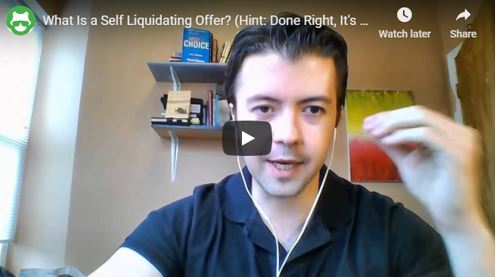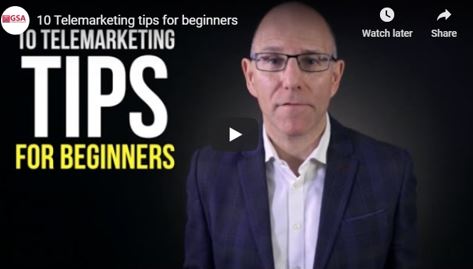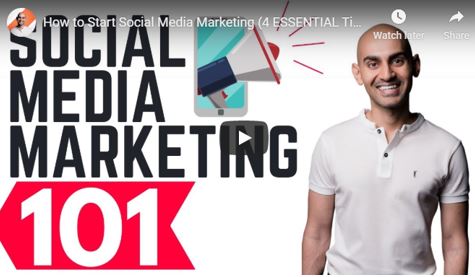What is Direct Marketing?
Direct marketing, (sometimes called direct response marketing) is a type of marketing where you get your message in front of your target audience without the use of a middleman, with the sole purpose of getting them to take immediate action.
Essentially, the marketing is put “directly” in front of potential end consumers.
The world is changing at a dramatic pace.
These changes are making direct to consumer marketing easier, faster, and a more financially viable option for small businesses.
How is it Different From Traditional Marketing?
When you think of traditional marketing you probably think of commercials on television, billboards on the highway, and other brand awareness campaigns. These marketing efforts have more to do with branding than anything else.
Large corporations with deep pockets put their advertising dollars into traditional marketing like this.
The purpose is to throw stuff against the wall and see what sticks, while also bringing awareness and name recognition to the brand.
The most important thing for these companies is reach (how many people will see the ad) and memorability (if that’s a word).
Will people remember the product or brand?
Will in increase brand awareness?
For example, when Nike or Adidas puts money into a campaign, they want to get it in front of as many people as possible.
They would rather get the ad in front of 10 million people than put it directly in front of 1,000 hyper-targeted potential customers and then track the results.
As a small business owner or home based business owner, you are probably more interested in turning every dollar you can into two dollars.
That takes being strategic, not just throwing money at the wall.
The goal with direct marketing is to get directly in front of somebody likely to take action and elicit a direct (and immediate) response (i.e. take some sort of action).
When is a Direct Marketing Campaign Most Effective?
If you plan to implement any type of direct marketing, it’s most effective when you do all of the following really well:
- Use a Specific and Highly Targeted List
- Utilize Split Testing to Increase Your Conversion Rate
- Measure Your ROI (Return On Investment)
- Analyze and Use Multiple Touch Points
1) Use a Specific and Highly Targeted List
In today’s day and age you can target customers likely to purchase your product or take the action you want them to take.
This targeting could include a specific demographic, age, location, or a variety of other indicators.
The back-end capabilities of online advertising gives you the ability to be hyper-specific with your marketing.
For example, you can even target potential customers based on previous actions (i.e. they watched part of a video, they visited a certain website, they follow a certain person on social media, and so on, etc.).
This is step one, to target the audience likely to take action.
2) Utilize Split Testing to Increase Conversion Rates
You should be using split testing to see what is working on a granular scale.
What ads are working with which customers?
Which ad platforms are giving you the highest conversion rates?
Which emails get the most open rates?
Which emails create the most sales?
We could spend all day listing marketing questions, stats, and data you could look at, but the point is, you should be looking at your data.
For direct marketing to work well, you must know your numbers.
What’s working?
What’s not working?
Then do more of what’s working.
3) Measuring the ROI (Return On Investment)
Return on investment or ROI, is quite possibly the most important indicator you should be watching.
Where are your sales coming from?
Are you making a return on investment or are your direct marketing dollars disappearing into the digital abyss?
If you’ve set up your direct marketing campaigns properly, you’ll be able to measure your ROI and make adjustments based on data and facts (not feelings).
4) Using and Analyzing Multiple Touch Points
It’s common knowledge in the marketing space that the more a potential customer sees your brand or message, the more likely they are to buy.
The key with direct marketing is to track those touch points the best you can.
Let’s say you have a video that converts really well with a specific audience.
So naturally, you’re spending money pushing it out to that audience to scale your growth as fast as you can.
However, maybe the conversion rate shoots through the roof the 3rd time people see your message or if people get a direct mail piece during the same week they’re seeing you online.
You won’t know any of this and can’t work this data into your marketing strategy if you’re not analyzing those touch points.
Be strategic.
Test, test, and test again.
Tweak your campaign.
See what’s working, then do more of it.
Direct Marketing Examples
Here are some of the most common types of direct marketing.
It’s not an exhaustive list, but it gives you a good foundation to build from.
If you become phenomenal at any of these strategies, it will dramatically increase your bottom line and profitability.
Direct Selling
This is exactly what it sounds like.
It is sales… direct sales; from you or the company you represent, to the end buyer.
You have a product, you find a customer, you sell that product or service to them in person and collect a payment (or commission).
A direct marketing campaign is meant to influence your effectiveness at making direct sales at some point down the road.
Direct selling is usually paired with any of the marketing strategies below because you must be directly in contact with somebody in order to create a sale.
Common sense, I know… but common sense isn’t too common these days.
Self Liquidating Offers
This is an online ninja advertising trick.
The marketing legend Dan Kennedy is known for saying “Whomever can spend the most money to acquire a customer… wins”.
So if you’re a small brand or don’t have thousands of marketing dollars behind, how do you “win”?
Is it even possible?
Shot answer… Yes it is.
That’s where the self liquidating offer comes in.
The purpose of a self liquidating offer is to drive traffic to your marketing and email funnel, while at the same time making money (or breaking even) on your advertising.
The real purpose is to build your email list and create leads for a high end product or service later on down the road.
With a good self-liquidating offer, you can recoup all your advertising dollars and build trust with your potential client.
Basically, you’re generating leads for free.
For more information, check out Matt Ackerson’s in depth article on the topic or you can just watch his video.
Direct Mail Marketing
Direct mail is when you send mail straight to the potential customer.
Don’t underestimate the power of good old fashioned “snail mail”.
In fact, I would argue that snail mail can be almost more powerful than other forms of marketing if done correctly.
One effective strategy is to use lumpy mail, which is just that… mail that is lumpy.
The curiosity factor almost always causes the receiver to open it, but I digress…
Just like any other marketing campaign, direct mail can be extremely expensive.
Make sure you have a budget planned out and a solid strategy in place.
Randomly ordering a couple thousand postcards and sending them to a non-targeted list is NOT a good strategy.
Like anything else, you won’t get better until you’ve been through a few cycles.
So Learn.
Implement.
Tweak.
Then start the cycle over.
And as always… do more of what works.
Hubspot has a great Ultimate Direct Mail Guide you can start with.
Outbound Telemarketing
Nobody seems to like telemarketing and cold calls (except for the businesses that are doing it effectively).
Believe it or not, telemarketing gets results.
Yes, it can be yucky and people can be rude.
But catch the right person, at the right time, and you suddenly have a call with a live prospect (and a potential sale).
Just be careful you’re following all applicable laws in your country.
This is especially true if you’re you’re calling consumers instead of businesses.
Either way though, make sure you’re following the letter of the law so you don’t get dinged.
Here are some basics to get you started.
Global International Marketing
The world has grown smaller in the last 20 years.
Well, it hasn’t actually gotten smaller, but the reach of individuals and companies has gotten larger, faster, and cheaper.
This means the world seems smaller.
It’s more accessible.
It also means that businesses can now market internationally easily and inexpensively.
If you’re a U.S. company and have a product that’s useful worldwide, this changes your potential pool of buyers from 325 million (U.S Population) to 7.6 billion.
One might argue that not all those 7 billion people are in a position to buy American products.
They would be correct in their assessment.
However, what if your product is a viable option for Europeans?
If Europe’s part of your International marketing plan, then you just increased your potential client and customer base by 740 million people (Europe’s population).
Now you’ve hit the 1 billion mark as far as potential customers go.
Welcome to the Global economy.
Affiliate Marketing
Affiliate marketing is an online strategy that can be used as a primary revenue stream or to supplement what you’re already doing.
The problem with using it as a primary revenue stream is that by the time you’re set up to be successful, you’ll probably be all set up with your own custom website and domain, which you can monetize in other ways as well.
For this reason, affiliate marketing is better utilized simply as an additional revenue stream.
For me, it’s all about adding value.
Any affiliate programs, courses, or software you offer your audience should be ones that you personally use (or have used) and gotten value from.
For my audience, my tools and resources page has a list of the tools I use to build my business.
They’re not all affiliate products, some of them are free resources.
But some of them give me a referral fee for anybody who purchases through my link.
That’s what an affiliate sale or affiliate commission is.
You should be constantly learning, growing, and trying new things.
If you try out a program, course, or software package and it doesn’t deliver, don’t suggest it as a resource.
The few sales that come in would ostracize your audience, which is a bad long term strategy.
You should never undermine your long term success for a short term win.
Also, always be upfront when you’re linking out to an affiliate.
It establishes trust with your audience, they appreciate it, and it’s an easy way for your audience to support you by simply getting something they want anyway.
Niche Marketing
Niche marketing is a marketing methodology that focuses all efforts on marketing to one segment of the population.
For example, this site is geared toward those interested in improving their financial life through marketing.
Specifically, through the vehicle of network marketing.
If you dig even deeper, you’ll see that it’s targeted to those with the same core values and religious beliefs as myself.
That doesn’t mean it will only attract people in that subset or that I’ll only do business with people of that subset, but it is a strategic niche intended to inform, educate, and persuade by offering lots of value in the form of content.
Niche marketing allows you to build authority with a target audience and cultivate a relationship over time.
It also builds topic authority, which I’ll cover in the next section.
Content Marketing and Topic Authority
While we’re discussing niche markets we should consider the overall strategy of content marketing.
Content Marketing is a super powerful direct marketing strategy (it also serves as an indirect marketing strategy as well).
With content marketing, you put out valuable content intended to draw people to you.
Whether you’re using a blog like this one, YouTube, or social media avenues, content marketing is meant to attract your ideal client or customer.
I go into more detail on this in the next section.
Currently, blog content gets increasing exposure from the Google algorithm as it builds up more and more topic authority.
That’s why it’s best to focus on one niche and go deep rather than create content that’s disconnected.
I firmly believe as time goes on, algorithms within YouTube and social media will eventually operate in much the same manner, giving extra love to those channels that are centered around a specific topic or niche.
Attraction Marketing
Attracting customers or clients is the purpose of all content marketing.
To attract people, customers, clients, and buyers to you instead of having to go out and spend money convincing them to do business with you.
Content and attraction marketing go hand in hand and work together as two sides of the same coin.
While content marketing can be broad, attraction marketing is usually connected to a spokesperson or attractive character.
This would be you if you’re the one creating the content.
The idea is to let people get to know you a little so that they want to do business with you.
It requires you to put yourself out there, but it can be a very effective direct marketing strategy.
Broad based content marketing is just meant to attract an audience, more like Wikipedia or Hubspot.
They produce tons of content, but it’s not centered around one central character or person.
You’re not getting to know anybody, you’re just consuming their free content.
Email Marketing and Opt-In Lists
How may times have you heard this phrase, “the money is in the list”?
Email marketing is how you take your random website traffic and pinch it off into a channel so you can systematically build trust.
Content will bring people in the door, but email will build the relationship and keep you top of mind.
There are so many intricacies to email marketing including list building, funnel building, and what to actually email to your list once you’ve started building it.
The one tool that has helped me the most in my email marketing is Sumo.
I quadrupled my email subscriber base in just a few short months using this tool.
You may have noticed a pop up inviting you to join our list or a static bar across the top doing the same thing.This is all due to Sumo and their easy to use platform.
You can have it up and running on your site quicker than it would take you to read this entire post.
Sumo was slowing my site down dramatically and affecting my Google rankings. So I switched to a plugin called Holler Box.
It has less bells and whistles but does basically the same thing as Sumo.
But it’s lightweight, loads fast, and doesn’t slow anything down.
Neil Patel’s Beginner’s Guide to Email Marketing is the best place to start learning about email marketing.
Social Media Marketing
There’s lots of hoopla around social media these days and for good reason.
For one, they’re all competing with each other for your marketing dollars.
If you can create a campaign that converts, they offer a great platform for scaling that ad-set.
Secondly, it seems everyone is on at least one social media platform, if not on multiple ones.
Social media marketing allows you to build a following, converse easily with individuals, and get your message to the masses.
Additionally, there’s always a chance your post will go viral, giving you massive exposure across the board.
If you’re going to play on this playground, just remember that the rules can change, the channels can eat up your budget, and you don’t own the platform (i.e. they can shut you down anytime they want).
I’ve also found you’re going to need much more marketing dollars to get something to convert.
Even so, if you’re not utilizing social media to some degree or another in your marketing, you’re potentially leaving thousands of dollars on the table.
Find out how with these basics from Neil Patel.
Using Pixels and Re-targeting in Direct Marketing Campaigns
This is more online ninja trickery!
Have you ever noticed after being on a site and looking at something, it suddenly pops up everywhere?
Let’s just say for the purposes of this article you went to Amazon and looked at blenders.
Next thing you know, blender ads are following you around everywhere you go online.
They’re on Google, they’re in your social media feeds, and the universe seems to be telling you that “yes, you do indeed need a blender”.
This is because when you land on a site, the site can track you and follow you using a “tracking pixel”.
If they have multiple pixels installed (say for LinkedIn, Facebook, Amazon, and Google), then they can re-target you on those channels.
This isn’t just reserved for the big powerhouse companies either.
As a small business owner, you can do the exact same thing.
All it takes is a little bit of code installed on your site (which can usually be done with a plugin if you’re using WordPress).
Direct Marketing versus Indirect Marketing
It’s important we cover this topic a little because the two marketing types are so closely intertwined.
Direct marketing, as we’ve discussed, is marketing directly to the end buyer and trying to illicit a direct response.
It can be with paid ads, email marketing, traditional direct mail, or any of the other methods we’ve discussed.
The difference between the two really comes down to purpose.
I like to think of direct marketing as going for the jugular.
You’re going for the immediate sale or at least some sort of immediate action.
Indirect marketing is more like starting a conversation.
This particular blog post is a form of indirect marketing.
This site is about teaching and educating people on how to grow their wealth by building a lifestyle business.
However, this particular post is about marketing in general.
If offers value to my audience, but it will also draw people in who are actively looking to learn about direct marketing for their traditional business.
Indirect marketing is simply starting a conversation or relationship with a potential future client or customer.
Which brings me to my next section…
Direct To Consumer Marketing
If you came here to learn about direct marketing, I hope I’ve helped. If so, please share and comment.
Now though, I want to steer the conversation in a bit of a different direction.
You may have noticed that this site is focused on the benefits and leverage of building a lifestyle business organization.
If you’re looking for an alternative stream of income that has huge upside potential and profitability, the model has changed over the last 50 years and you may be interested to know how.
Maybe it’s a fit, maybe not, but you won’t know if you don’t consider it with an open mind.
The Beginning
In the early days of the home based business industry, there was no internet.
Everything had to be done in person, on the phone, by mail, or with the door to door home party approach.
Distributors had to keep product on hand and personally service all their customers.
This led to garages full of product and a bad taste in people’s mouth for the industry as a whole.
But if you’ve been paying attention, you’ve realize the world has changed… and continues to do so at an amazing rate.
The home based business model is growing at a ridiculous speed.
Did you know the network marketing industry has worldwide revenue of 183.7 billion dollars? (1)
That’s more than the NFL, Music, and video game industry combined!
Not only is the industry growing, but the number of people finding success and earning over 6-figures is also increasing.
The reason for the phenomenal growth in this sector and the change in public perception can be attributed to a few things:
- Millennials are looking for alternatives to the 40 year work plan.
- People now understand the power of leverage and the recurring revenue model.
- More and more people are getting to retirement and NOT having enough to live comfortably.
- Compensation plans have evolved, making it possible to actually earn substantial income.
- From a business perspective, it’s the cheapest financial business model around (with the highest upside potential). It’s like franchising without the prohibitive franchising fee.
- Online strategies allow anybody to build a worldwide organization (from their computer).
- Speed of growth has increased dramatically. A market influencer can reach out to 50,000 people on their “list” with one click of a button. Their biggest concern becomes whether or not the company infrastructure can keep up with their growth.
- Direct to consumer shipping (drop shipping) and technology has changed the way the business model works forever.
Basically, with advances in technology, everything can be tracked on the backend.
If you (and your team) build an organization of 25,000 people, your commissions are automatically calculated and paid from every sale… and your parent company will ship everything directly to your customers.
You don’t have to touch a thing.
Just focus on building a team and getting customers.
For more information on this topic, get in touch with us for a zero pressure Q & A session or browse our articles on the subject.
We wish you the best in your direct marketing efforts and remember:
“If nothing changes… nothing changes.”
*Visit our Spiritual Wellness page if you’d like more information on how to have a personal relationship with Jesus Christ.


Jason & Daniele








